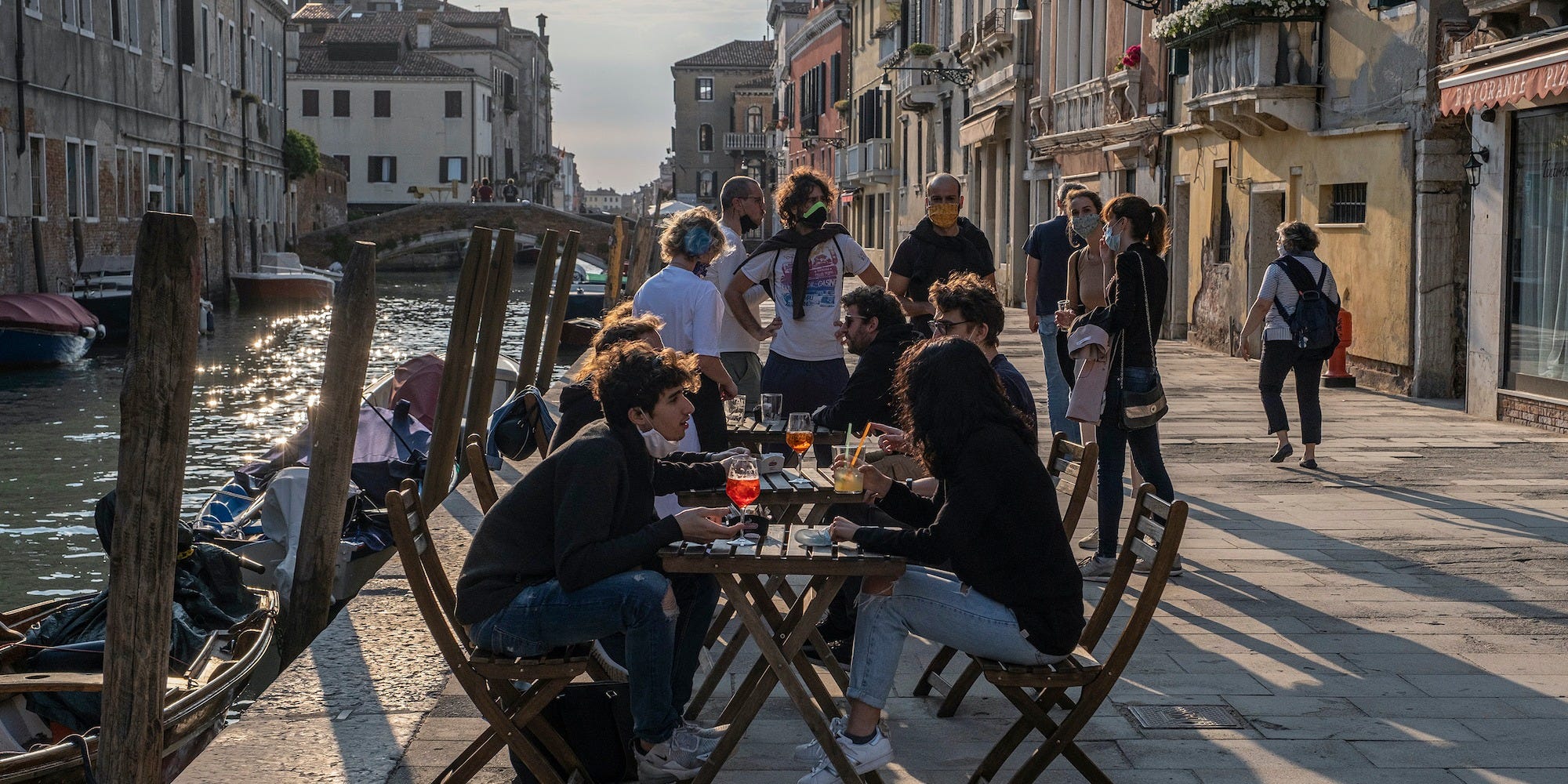- Coronavirus lockdowns are being lifted across Europe. Starting in mid-June, some countries began lifting internal travel restrictions to allow Europeans to travel throughout the continent.
- On July 1, the European Union is set to open its borders to international travel outside of Europe, but may bar travelers from the US, Russia, and Brazil from entering its member states due to high coronavirus rates.
- These photos show what life looks like in Italy, Spain, France, Germany, Denmark, Belgium, the Netherlands, Poland, and Sweden, as each country begins a return to normalcy.
- Visit Insider’s homepage for more stories.
Just three months ago, Europe was seen as the epicenter of the coronavirus pandemic, where infections and death rates soared across Italy, Spain, Germany, and France.
But the tables have turned. Now, the US leads the world in its coronavirus outbreak, and European countries have begun easing their lockdown restrictions and reopening borders.
Across the continent, businesses, restaurants, and shops have reopened, while coastlines and parks buzz with crowds of people. In mid-June, numerous countries – including France, Germany, Italy, and Belgium – opened their borders to fellow Europeans and encouraged a return of tourism.
On July 1, the European Union is set to open up its borders to international travel. But the EU is considering barring Americans from entering its member states due to the United States’ failure to control the outbreak.
These photos show what life is starting to look like in Europe, as countries ease away from lockdown orders.
Italy, the country once hit hardest by the pandemic, began slowly reopening its economy as early as mid-April. By May 18, beaches, shops, restaurants, and church services were able to reopen with social distancing guidelines.

Source: Business Insider, Reuters
Since the beginning of summer, Italians have been seen flocking to the coast, revisiting museums, and dining out again.

Source: New York Times
But as the country begins returning to normalcy, Italians are worried that a reluctance for tourists to travel this summer will continue to hurt its economy. In this photo, tourism workers are seen protesting for more government assistance.

Source: New York Times
Spain, the country with the highest number of coronavirus deaths in Europe, began reopening in phases starting in April after a strict national lockdown. Here, crowds of people are seen sunbathing off the coast of Barcelona.

Source: Business Insider
At the end of June, life in Spain began to transition into what the government calls "a new normal," which allows public life and businesses to operate with new safety measures. In this photo, children are seen on a playground in Madrid for the first time in nearly 100 days.

Source: The Local
On June 21, the country lifted its 3-month long national state of emergency, and is now allowing Spanish residents to travel freely across Europe. Members of the EU and Britain can now enter the country as well.

Source: CBS
In France, bars and restaurants began to reopen at the beginning of June. Starting on June 22, cinemas and theaters have been able to resume business with social distancing guidelines. In this photo, people are seen having drinks and riding bikes outside.

Source: Euro News
Additionally, on June 22nd, French schools began to fully reopen for the first time since March 16.

Source: Euro News
Here, people are seen enjoying a sunny day on the coast of southern France.

In Germany, a strategic and strict reopening plan starting in early May allowed the country to resume nearly every aspect of life. In this photo, people are seen visiting a museum in May.

Source: New York Times
Germany's approach to handling outbreaks has been swift. While much of the country has been able to reopen under social distancing guidelines, the government has reinstated lockdowns for 500,000 people in two districts after a new outbreak hit in June.

Source: Business Insider
In Denmark, students began going back to school as early as April 15, making it one of the first European countries to lift school lockdown measures.

Source: Business Insider
On May 18, restaurants, businesses, and shops began to reopen. One writer in the Guardian described the reopening process as looking nearly identical to life before the pandemic, with only more hand sanitizer and distancing.

Source: The Guardian
In Belgium, people are seen dining at a restaurant in mid-June after entering phase three of easing lockdown restrictions. The country has allowed shops, hotels, cafes, and restaurants to resume business with social distancing measures.

Source: CNN Travel
To boost the economy and encourage a return to travel, Belgium has even offered free rail passages to its citizens and opened its borders to other European travelers.

Source: CNN Travel
This photo in Amsterdam shows people sitting outside in a square after restrictions began easing in May. Some businesses, including hairdressers and beauticians, are no longer required to wear a mask during work.

Source: New York Times
Poland began to ease back into normal life with the reopening of businesses, shops, and restaurants in May. In this photo, people are seen watching a performance at a reopened theater in June.

Source: Reuters
Sweden took a more unusual route in its coronavirus response. The country did not implement a lockdown and kept many of its businesses operating as usual during the height of the outbreak.

Source: Business Insider
Because of this approach, Sweden has received backlash for recording one of the highest death tolls. Today, the country looks roughly the same as it did in March, with bars, restaurants, businesses, and schools open to the public.

On July 1, the EU is set to reopen its borders to international travel. However, the plan might bar people coming from the US, Russia, and Brazil due to high coronavirus outbreaks in each country.

Source: Business Insider
